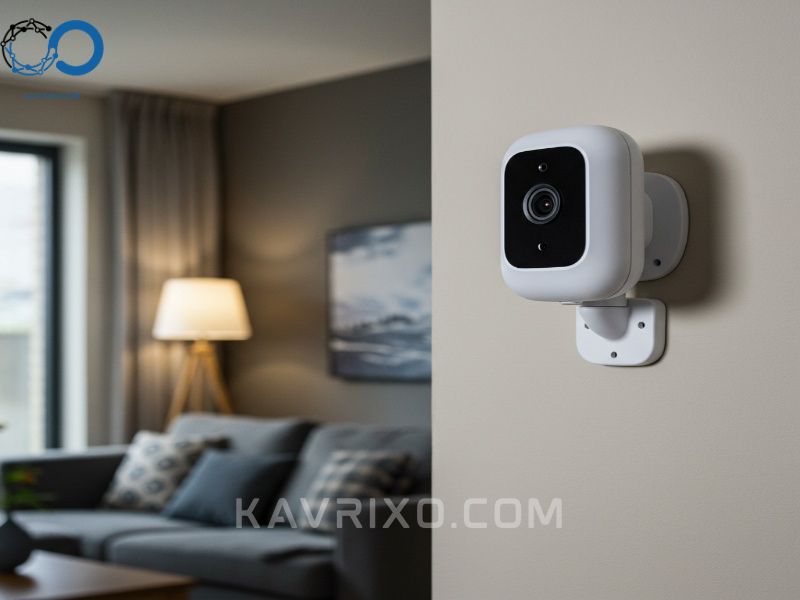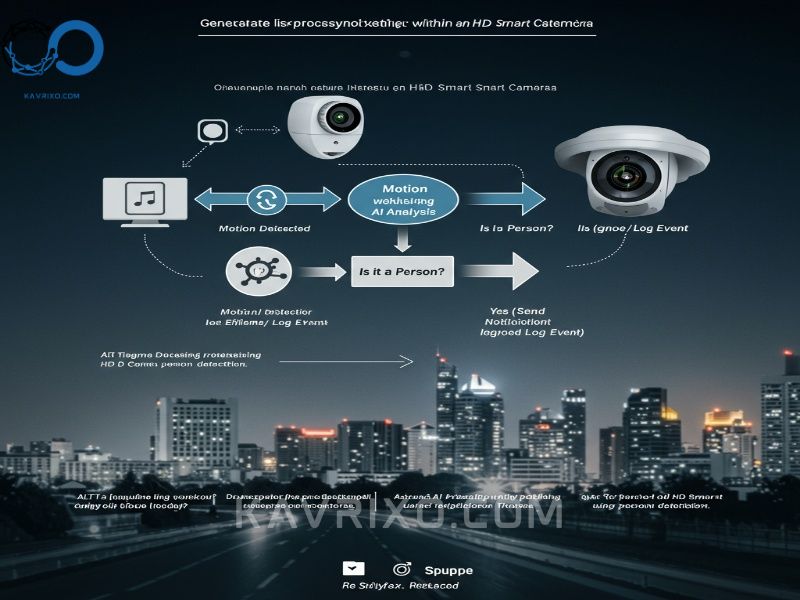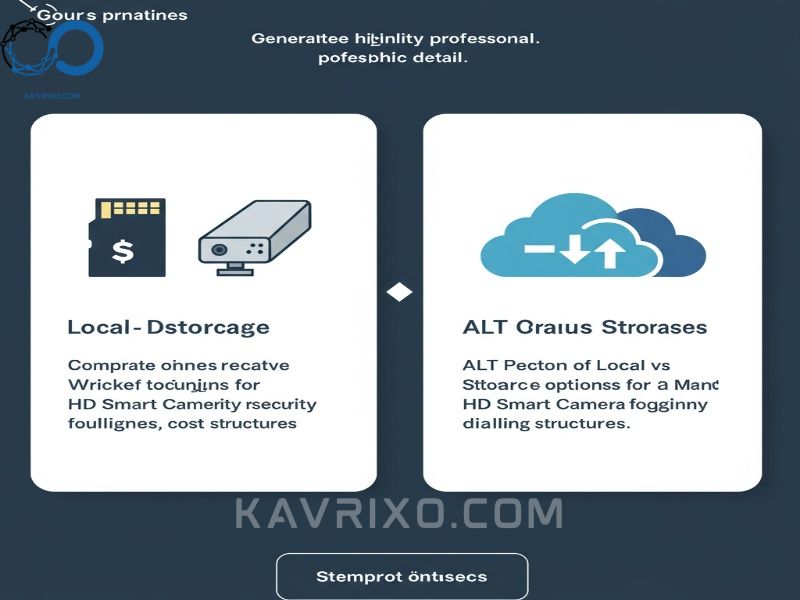The world has fundamentally changed how we approach security. Gone are the days of grainy, unreliable CCTV footage that offered little more than blurry proof after an incident. Today, consumers demand clarity, intelligence, and accessibility. This shift is entirely driven by the rise of the hd smart camera, a device that combines high-definition video capture with sophisticated artificial intelligence and seamless connectivity.
Whether you are looking to monitor package deliveries, keep an eye on pets while away, or ensure the perimeter of a commercial property remains secure, understanding the nuances of modern surveillance is critical. This comprehensive guide will walk you through the essential features, technical specifications, and practical considerations necessary to choose and deploy the ideal intelligent surveillance system for your unique needs. We’ll delve deep into what makes these devices revolutionary and how they provide peace of mind in high definition.
Contents
- 1 Decoding the Technology: What Makes an HD Smart Camera “Smart”?
- 2 Types of HD Smart Cameras and Their Applications
- 3 Crucial Features to Consider Before Purchase
- 4 Installation and Setup: Making the Most of Your Camara HD
- 5 Future Trends in HD Smart Camera Technology
- 6 Conclusion: Securing Your World with High-Definition Clarity
Decoding the Technology: What Makes an HD Smart Camera “Smart”?
The core differentiator between a traditional security camera and an hd smart camera isn’t just the picture quality—it’s the processing power and integration capabilities. A basic security feed simply records; a smart camera analyzes, communicates, and alerts. This transformation is rooted in three key technological pillars: superior resolution, advanced AI processing, and robust connectivity.

Resolution Matters: The Leap from Standard Definition to Crystal Clarity
The “HD” (High Definition) in hd smart camera is the foundational requirement. HD typically refers to 720p (1 megapixel) or 1080p (2 megapixels) resolution. However, the market has rapidly moved toward higher standards, often integrating “Ultra HD” or 4K (8 megapixels) into systems that are still commonly grouped under the “HD smart camera” umbrella.
Why is resolution so important in security? Details matter when identifying a license plate, recognizing a face, or confirming the specific nature of an intrusion.
- 1080p (Full HD): This is the current baseline standard for most consumer-grade hd smart cameras. It provides sufficient detail for general monitoring and facial recognition within a reasonable distance (typically 10-20 feet). It offers a good balance between video quality and storage/bandwidth requirements.
- 4K (Ultra HD): Offering four times the pixel count of 1080p, 4K cameras provide incredible detail, allowing users to digitally zoom in on footage without losing crucial clarity. While this significantly increases storage needs, it is becoming the preferred choice for outdoor perimeter surveillance or large areas where maximum evidence capture is necessary. When selecting a high-end camara hd, always confirm the effective resolution and frame rate (frames per second), as a higher frame rate (30fps) results in smoother, more usable footage, especially during fast-moving events.
The clarity provided by high-definition sensors ensures that your investment in a security system pays off when you truly need the evidence.
AI Integration and Motion Detection: Moving Beyond Simple Alerts
The “Smart” functionality is defined by the camera’s ability to interpret what it sees. Older systems would trigger an alert for any motion—a falling leaf, a passing car, or a neighborhood cat. This led to “alert fatigue,” causing users to ignore critical notifications. Modern hd smart cameras utilize onboard or cloud-based AI to filter and categorize events.
Key AI features found in top-tier systems include:
- Person Detection: The camera can distinguish between a human shape and other moving objects. This drastically reduces false alarms and focuses notifications on genuine threats or arrivals.
- Facial Recognition: Some premium systems can learn and identify specific individuals (family members, employees) versus strangers, allowing for customized alerts or access control integration.
- Vehicle Detection: Essential for driveways and parking lots, this feature isolates vehicles from pedestrians, often providing details about the vehicle’s direction or stopping time.
- Package Detection: A crucial transactional feature for modern consumers, this alerts the user specifically when a package is delivered or, critically, when it is moved or stolen.
This intelligent processing means your hd smart camera is no longer just a recorder; it’s a proactive security analyst working 24/7, ensuring that every alert you receive is meaningful and actionable.

Connectivity and Ecosystem: The Seamless Smart Home Integration
A truly smart device must be connected. Most hd smart cameras rely on robust Wi-Fi connectivity (often supporting both 2.4 GHz and 5 GHz bands for optimal performance). However, the ecosystem integration is what truly unlocks their potential.
A high-performance hd smart camera should integrate smoothly with major smart home platforms, such as Amazon Alexa, Google Home, and Apple HomeKit (via Matter or dedicated bridges). This allows users to:
- View the live feed on a smart display (“Show me the front door camara hd“).
- Trigger automated routines (e.g., if motion is detected after 10 PM, automatically turn on the hallway lights).
- Use voice commands to arm or disarm the system.
When evaluating a potential system, always check its compatibility list. A closed-loop system might offer superb performance but limits flexibility, whereas an open-standard hd smart camera offers longevity and adaptability within a growing smart home infrastructure.
Types of HD Smart Cameras and Their Applications
The vast market for intelligent surveillance means there is a specialized camera for every scenario. Choosing the right form factor is just as important as choosing the right resolution.
Indoor Monitoring Solutions: Discreet and Feature-Rich
Indoor hd smart cameras are typically designed to be aesthetically pleasing and relatively compact. Their primary roles are monitoring children or pets, internal security against intruders, and general home monitoring.
- Pan-Tilt-Zoom (PTZ) Models: These systems allow the user to remotely control the camera’s viewing angle. A single PTZ indoor unit can often cover an entire large room, making it highly efficient.
- Fixed Lens Models: Simple, often cube-shaped cameras offering a wide field of view. These are excellent for specific choke points like entryways or hallways.
- Pet/Nanny Cams: Often include advanced features like treat dispensers, sleep tracking, and enhanced two-way audio for communication.
Indoor cameras rarely require advanced weatherproofing but must excel in low-light performance (night vision) and discreet operation. Many sophisticated indoor hd smart cameras now include automatic privacy shutters that physically block the lens when the homeowner is present, addressing growing concerns over privacy.
Outdoor Weatherproof Systems: Durability Meets Intelligence
Outdoor security demands robust construction and powerful technology to withstand the elements while maintaining critical vigilance. These units are built to monitor large areas, from property lines to gardens, and must handle harsh conditions.
- Environmental Ratings (IP Ratings): Any outdoor camara hd must have an ingress protection (IP) rating, typically IP65 or higher, indicating protection against dust, rain, and jets of water.
- Wider Fields of View (FOV): Outdoor lenses often feature 130° to 180° FOVs to cover maximum ground, though this wide angle can sometimes introduce a “fish-eye” distortion, which sophisticated software must correct.
- Power over Ethernet (PoE): While wireless outdoor cameras exist, many high-end permanent systems utilize PoE. This allows a single Ethernet cable to deliver both power and data, simplifying installation and providing a far more stable connection than Wi-Fi, especially across long distances.

Specialized Cameras: Doorbell and Floodlight Integration
Two specialized forms of the hd smart camera have become indispensable for modern homeowners:
- Video Doorbell Cameras: These replace traditional doorbells, offering immediate alerts for visitors, two-way communication, and excellent head-to-toe viewing angles, crucial for package monitoring. They are usually battery-powered or utilize existing doorbell wiring.
- Floodlight Cameras: These combine high-powered LED lighting with a 1080p or 4K camera. The light is typically triggered by motion, effectively deterring intruders while simultaneously capturing highly detailed, full-color nighttime video. This integration maximizes security effectiveness, as sudden, bright light is a powerful deterrent.
Crucial Features to Consider Before Purchase
Navigating the specifications of an hd smart camera can be overwhelming. Beyond resolution and form factor, several critical operational features determine the total cost of ownership and the long-term effectiveness of the security system.
Storage Solutions: Local vs. Cloud (The Subscription Question)
A critical factor for any camara hd is how and where the footage is stored. This decision directly impacts monthly operating costs and accessibility.
Cloud Storage (Subscription Model)
Most major brands (Ring, Nest, Arlo) heavily promote cloud storage.
- Pros: Footage is safe even if the camera is destroyed or stolen; easy access from anywhere via the application; often includes enhanced AI processing features (like advanced facial recognition).
- Cons: Requires a recurring monthly or annual fee; reliant on a stable internet connection; potential privacy concerns regarding data stored on third-party servers.
Local Storage (One-time Cost)
Local storage typically involves an internal SD card or an external Network Video Recorder (NVR).
- Pros: No ongoing subscription fees; complete control over your data; continues to record even if the internet goes down (though remote viewing is lost).
- Cons: Footage is vulnerable if the camera or NVR is physically stolen or damaged; manual management of storage space may be required.
Hybrid systems, which offer local storage backup and optional cloud access for advanced features, often provide the best balance between affordability, security, and convenience. When comparing systems, always calculate the five-year total cost of ownership, factoring in the subscription fees.

Field of View and Night Vision Capabilities
The coverage area is defined by the camera’s Field of View (FOV). As mentioned, wider FOVs are preferred, but they must be paired with high resolution to maintain clarity across the entire frame. A 160-degree FOV is often ideal for covering a porch or standard yard.
Night vision technology in an hd smart camera determines its effectiveness after sundown.
- Infrared (IR) Night Vision: The most common type, providing black-and-white video footage. The range of the IR emitters is crucial; outdoor cameras should ideally have an effective night vision range of 30 feet or more.
- Color Night Vision: Achieved either through extremely sensitive low-light sensors (Starlight technology) or by utilizing integrated floodlights. Color footage provides exponentially more useful evidence than black-and-white footage, as it helps identify clothing colors and environmental details. If security is paramount, prioritizing a camera with robust color night vision is highly recommended.
Two-Way Audio and Privacy Controls
Communication features are standard in most modern hd smart cameras. Two-way audio allows users to speak directly through the camera—a useful deterrent for delivery personnel, solicitors, or potential intruders. Ensure the audio quality is clear, both for the speaker and the microphone pickup.
Privacy controls, particularly for indoor cameras, are non-negotiable. Look for features such as:
- Geofencing: The system automatically disables recording when your smartphone enters the home area and resumes when you leave.
- Privacy Zones/Masking: The ability to digitally block off sensitive areas within the camera’s view (e.g., neighbor’s windows, keypads, or private documents) so that the camera records everything except those designated zones.
These controls ensure that your hd smart camera enhances security without compromising personal privacy within your own space.

Installation and Setup: Making the Most of Your Camara HD
Once you’ve selected the perfect system, effective installation is the final, critical step. Even the best 4K hd smart camera is useless if it’s placed incorrectly or improperly configured.
DIY vs. Professional Installation
Many consumer-grade hd smart cameras are designed for straightforward DIY installation. Wireless systems, particularly those using battery power, require minimal drilling, often just mounting a small bracket.
- DIY Benefits: Cost-effective, immediate control over placement, and generally quick setup (often 15-30 minutes per camera).
- Professional Benefits: Essential for complex systems like wired PoE setups, multi-camera networks, or commercial installations. Professionals ensure optimal Wi-Fi signal strength, proper wiring concealment, and correct integration with complex NVRs (Network Video Recorders).
If you are dealing with a large property or require a system that includes integrated alarms and monitoring services, professional installation of your camara hd system is usually the wiser choice.
Optimal Placement Strategies
Strategic placement maximizes the effectiveness of your hd smart camera. Security experts recommend focusing on “choke points” and common access areas:
- Front Door/Entryways: The single most important location. Use a wide-angle lens or video doorbell, positioned 6-7 feet high, to capture faces and package areas.
- Ground Floor Windows: Position cameras to cover ground-level windows, which are common entry points for intruders.
- Driveways and Garages: Use robust outdoor hd smart cameras here. Ensure the camera is positioned to capture the license plate area, ideally from an angle that minimizes direct sunlight or headlight glare, which can wash out essential details.
- Avoid Direct Backlight: Never aim the camera directly at a bright light source (sun, powerful floodlight), as this will cause the foreground subjects to be severely underexposed and silhouetted.
- Height Matters: Mount outdoor cameras high enough (8-10 feet) to be out of easy reach but low enough to capture clear facial details.
Future Trends in HD Smart Camera Technology
The evolution of the hd smart camera is accelerating. As AI becomes more sophisticated and sensors become smaller and more powerful, we are seeing several trends emerge that will redefine home and business security:
- Edge Computing: Moving AI processing power directly onto the camera chip (“at the edge”) rather than relying entirely on the cloud. This results in faster decision-making, reduced latency in alerts, and lower demands on internet bandwidth.
- 5G Integration: The rollout of 5G networks promises faster, more reliable connections, making it easier to stream and upload massive 4K and 8K video files instantly, even in mobile or temporary setups.
- Advanced Biometrics and Behavioral Analysis: Future systems will go beyond simple person detection. They will analyze gait, posture, and abnormal behavior (e.g., loitering, sudden running) to trigger highly predictive alerts, allowing security systems to intervene before an incident occurs.
- Integration with Robotics: While nascent, integration with automated drones or robotic vacuums equipped with secondary cameras is on the horizon, allowing for dynamic, patrolling surveillance inside large properties.
Conclusion: Securing Your World with High-Definition Clarity
The decision to invest in an hd smart camera system is an investment in safety, convenience, and evidence. Modern intelligent surveillance systems are no longer a luxury reserved for high-security facilities; they are accessible, powerful tools that provide unparalleled clarity and control over your environment.
By focusing on high resolution (1080p minimum, 4K preferred), leveraging sophisticated AI features like person and package detection, and carefully considering the total cost of ownership (storage subscriptions), you can select a system that is perfectly tailored to your security needs. Whether you choose a simple, battery-powered hd smart camera for a small apartment or a comprehensive, wired camara hd network for a commercial building, the clarity and intelligence available today ensure that you are always connected to what matters most.
Take the time to research, plan your placement, and configure your system properly. The peace of mind that comes from knowing you have crystal-clear, actionable footage ready at a moment’s notice is invaluable.
